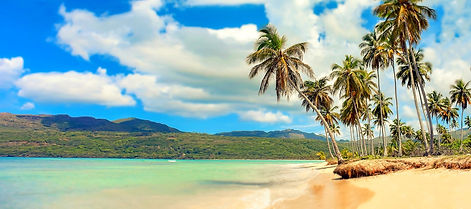
Flag and Facts

Flag of the Dominican Republic
The Dominican Republic has a unique flag with many elements that represent the country's history. The flag features a white cross in the center that divides the flag into four quadrants. The top left and bottom right quadrants are colored blue while the other two are red. The white cross represents salvation, the blue represents liberty and the red represents the blood of heroes who lost their lives fighting for the Dominican Republic. A small coat of arms is in the center of the cross. This coat of arms consists of a shield with a laurel branch on the left and a palm on the right. Above the shield is a blue ribbon that displays "DIOS, PATRIA, LIBERTAD," which translates to "God, Fatherland, and Liberty.". Inside the shield, an open Bible displays the verse, "Y la verdad nos hará libre," which translates to "And the truth shall set you free." The flag was originally created by Juan Pablo Duarte, who was a part of the revolutionary group La Triniaria and is often considered the father of the nation. Duarte emphasized the flag’s Christian heritage by placing a cross in the middle and including a bible in the coat of arms. After La Trinitaria’s revolution, the flag was adopted as the official flag of the Dominican Republic.
Economy of the Dominican Republic
The Dominican Republic has a rather good economy for a Latin American country, boasting a large annual growth rate of 5.26% since 1992, using the Dominican Peso as their currency, which is worth 0.016 dollars. The Dominican Republic has a gross domestic product of 15,900 dollars per capita, which far outclasses many other Latin American countries. This is likely due to the successful economic industries in the country, including tourism, sugar processing, gold mining, textiles, cement, tobacco, electrical components, manufacturing, and medical devices. These industries, especially tourism, and manufacturing, are likely successful due to the free trade zones within the country, and the enticing tropical climate. The Dominican Republic has many free trade zones that provide immunity from taxes and fees that affect production in those zones. Because of these free trade zones, the Dominican Republic has many trading partners, including the United States, Switzerland, Haiti, India, and China. Unfortunately, most of that money is reserved for the richer residents, as the 10% of the population with the lowest income receives less than 1% of the national income with over 23.9% of the population under the poverty line. The 10% with the highest income rec
eives over half of the national income. The labor force of the Dominican Republic consists of a sizable 5,113,000 people, but concerningly, 180,423 of those people are children under the age of 14. The majority of the labor force of the Dominican Republic works in services, while almost all of the remaining workers work in agriculture and industry. The Dominican Republic’s imports consist mainly of petroleum, foodstuffs, cotton and fabrics, chemicals, and pharmaceuticals, while the major exports are Gold, silver, cocoa, sugar, coffee, tobacco, meats, and consumer goods. Overall, the Dominican Republic has a relatively stable economy with decently high earnings, especially for a Latin American country, despite having lots of child labor and poverty.



